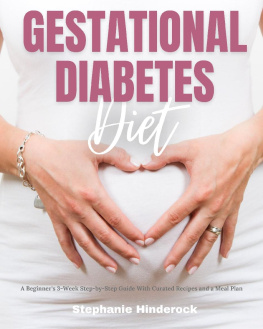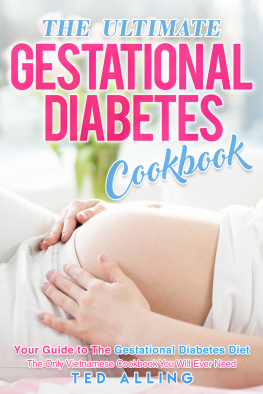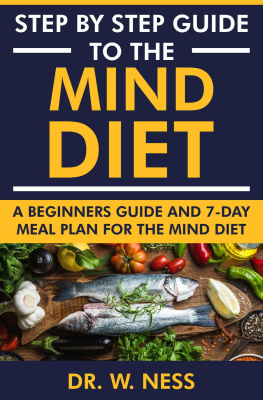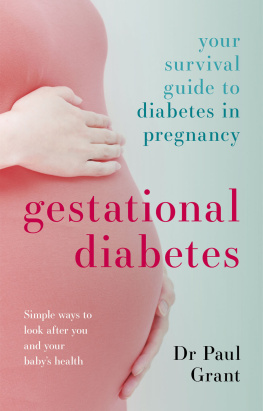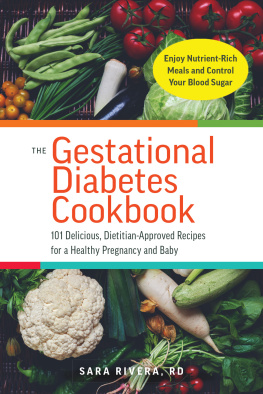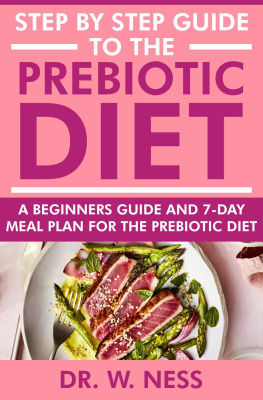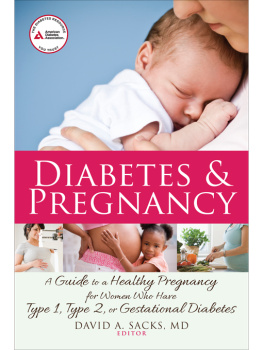Table of Contents
Gestational Diabetes Diet
A Beginner's 3-Week Step-by-Step Guide with Curated Recipes and a Meal Plan
Copyright 2020 Stephanie Hinderock
All rights reserved. No portion of this book may be reproduced in any form without permission from the publisher, except as permitted by U.S. copyright law.
Disclaimer
By reading this Disclaimer, you are accepting the terms of the disclaimer in full. If you disagree with this disclaimer, please do not read the guide. The content in this guide is provided for informational and educational purposes only.
This guide is not intended to be a substitute for the original work of this diet plan. At most, this guide is intended to be a beginner's supplement to the original work for this diet plan and never act as a direct substitute. This guide is an overview, review, and commentary on the facts of that diet plan.
All product names, diet plans, or names used in this guide are for identification purposes only and are the property of their respective owners. The use of these names does not imply endorsement. All other trademarks cited herein are the property of their respective owners.
None of the information in this guide should be accepted as independent medical or other professional advice. The information in the guide has been compiled from various sources that are deemed reliable. It has been analyzed and summarized to the best of the Author's ability, knowledge, and belief. However, the Author cannot guarantee the accuracy and thus should not be held liable for any errors.
You acknowledge and agree that the Author of this guide will not be held liable for any damages, costs, expenses, resulting from the application of the information in this guide, whether directly or indirectly. You acknowledge and agree that you assume all risk and responsibility for any action you undertake in response to the information in this guide.
You acknowledge and agree that by continuing to read this guide, you will (where applicable, appropriate, or necessary) consult a qualified medical professional on this information. The information in this guide is not intended to be any sort of medical advice and should not be used in lieu of any medical advice by a licensed and qualified medical professional.
Always seek the advice of your physician or another qualified health provider with any issues or questions you might have regarding any sort of medical condition. Do not ever disregard any qualified professional medical advice or delay seeking that advice because of anything you have read in this guide.
Introduction
Having a life-form inside your womb is one of the noblest undertakings any woman could ever have. It is one of the most challenging too and being able to get through it can really make any female a whole lot wiser, and a whole lot better in terms of overall well-being. What makes it a very difficult challenge is how physically demanding this is.
Because of the very fact that there is another human growing inside you, great physical changes are happening to your own body as well, and some of these changes can easily be labeled as unpleasant. But pregnancy should be a journey that you can enjoy as well. For that reason, it would be best to learn some methods that you can utilize to make the process of pregnancy be as bearable as possible.
One such method is by combating physical complications or illnesses that lurk in the corners, waiting to prey on you, robbing you of the joyous rewards that await in motherhood.
By keeping such illnesses at bay, pregnancy could be the most profitable event that could take place in your life.
One such illness, gestational diabetes is one of the most serious obstacles that the otherwise amazing entirety of childbearing can deliver.
In this beginners quick start guide, you will discover:
What gestational diabetes is
Who is at highest risk for gestational diabetes
4 key reasons why you should take gestational diabetes seriously
A 3-week beginners guide that walks you through a specialized diet plan
What foods you should eat and what foods you should not eat if you have gestational diabetes
A sample step-by-step meal plan to combat gestational diabetes
Chapter 1: Getting Acquainted with Gestational Diabetes
Some diabetics inherited their condition via hereditary means, while others got it because of their eating habits. Some however became diabetics just as they are going through pregnancy. Thats what differentiates Gestational diabetes from the conventional form of diabetes that we know of it is one of the most dangerous manifestations of hosting a life-form inside your womb.
To simply put it, we might say that Gestational Diabetes is something that only develops during pregnancy, something that wouldnt have happened any other way around. Statistically speaking, up to 9% of women could get it during the earliest years of its discovery. In the recent decade, however, the number has been known to rise up to 56%, which could be due to problems of dieting and food-choice patterns.
How does it happen and how does it affect both the mother and the child?
It is common knowledge that the placenta is a temporary organ that the female body generates so that there can be a smooth connection between the baby and the mother. Without it, the child would not get the accommodation he or she needs. If there is no placenta, there would be no way for the nutrients that the mother ingests to be passed into the growing babys body. Furthermore, the hormones needed by both the mother and the child would not be regulated without it.
During the 20th to 24th week of pregnancy, some of those hormones might impair the very act of regulating the insulin processing of the mothers body, lowering its efficacy. As the placenta grows larger, the problem could get worse too. Although the pancreas will do its task of dealing with it, there are cases in which it cant bear the pressure too. This is one of the reasons why a mother accumulates diabetes as she is getting through the process of pregnancy.
Consequently, the babys body could have similar reactions too. Even though he or she has already been detached from the mothers body during birth, the babys pancreas could have adapted the habit of producing more insulin than whats necessary. As the baby no longer receives sugar-based energy from the mother, hypoglycemia could take place, due to the baby having low blood sugar levels. Seizures could occur, which will result in having the babys vitals monitored religiously. Having diabetic offspring in the making is something that nobody wants to undergo.
Who are the most likely victims?
One interesting fact about Gestational Diabetes is that it seems to manifest differently among races. For instance, its been known to rate higher among Asians and Hispanics. This doesnt mean that Caucasian women should be less-careful though, as it could also affect them, though at a much lower rate only.
To figure out if you have a high risk of getting it, you have to know if you belong to any of these categories:
Being obese or overweight
Has a family history of diabetes
Older than 25 years old
Having given birth to large babies in the past
Whichever item you may fall, it would be wise to condition your mind into avoiding what little risk is ahead of you. It would be smart and decisive now to have lots of regrets later.
Chapter 2: Why Gestational Diabetes Should Be Battled Seriously
Because having this physical condition can lead to more unpleasant outcomes, it should be treated with the most strategic and meticulously crafted courses of action. The science behind pregnancy is one of the most thoroughly researched scientific fields ever, it should also go without saying that the methods to be employed as one undergoes through it should be well-planned too. It is because the following complications must be avoided:

